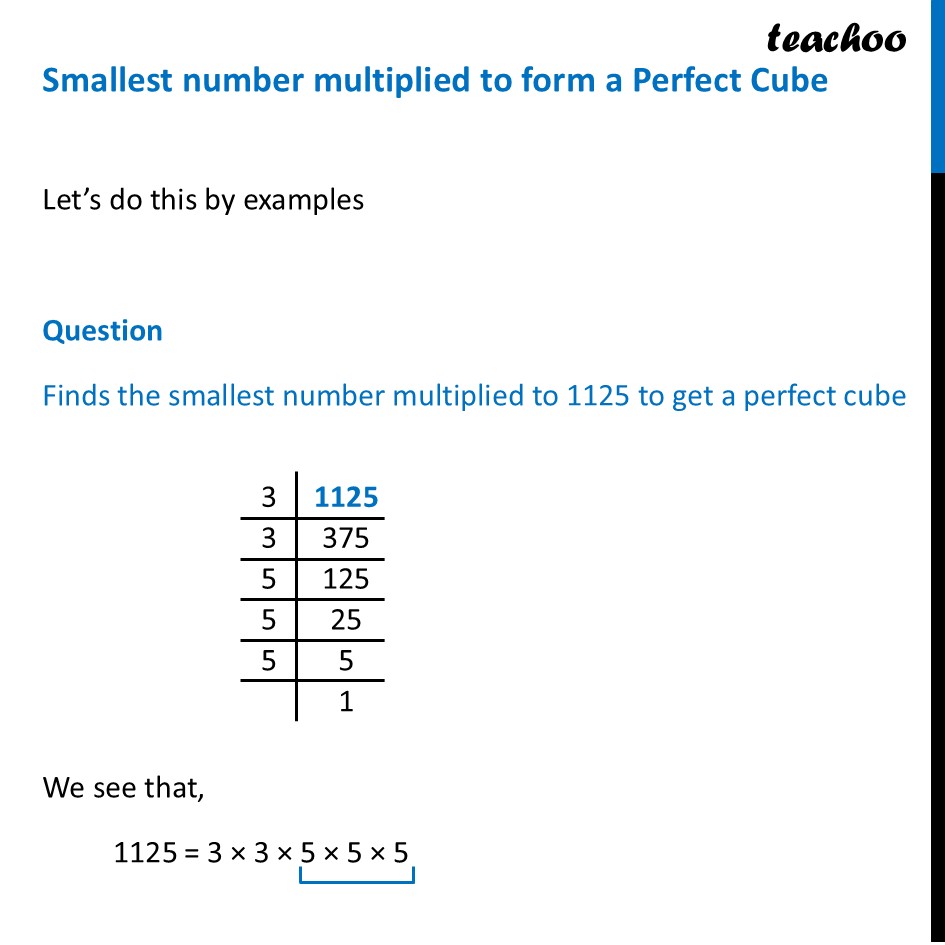
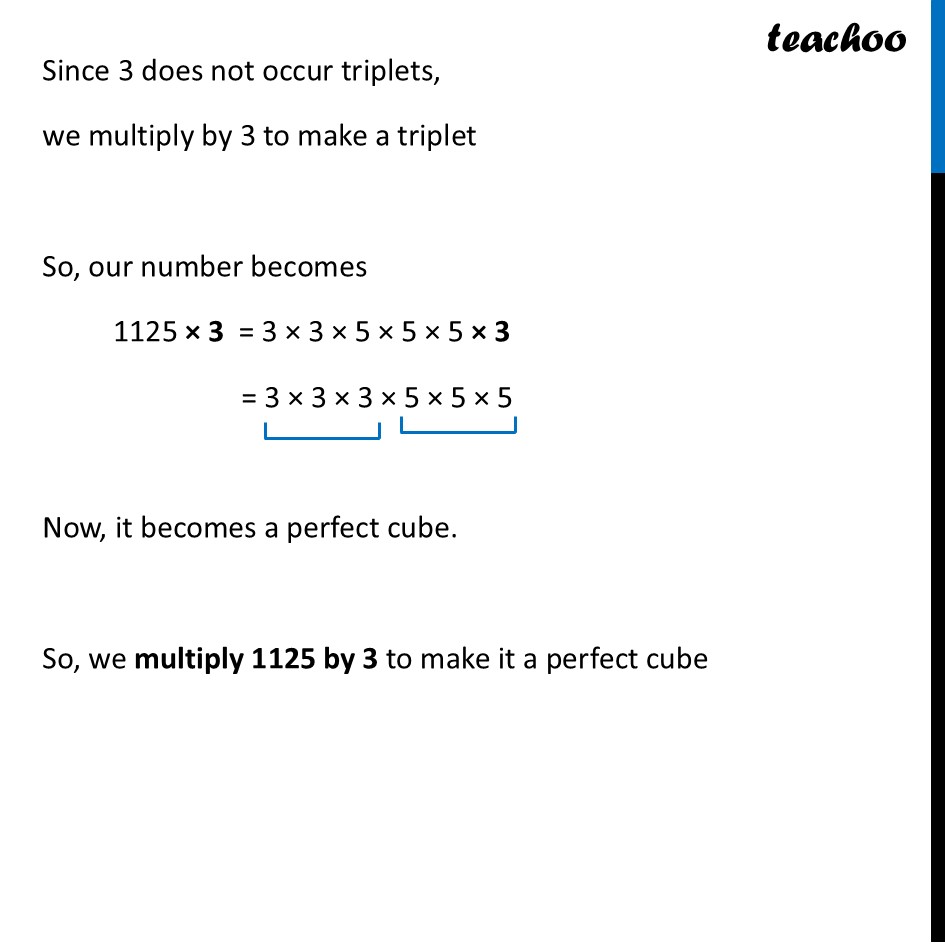
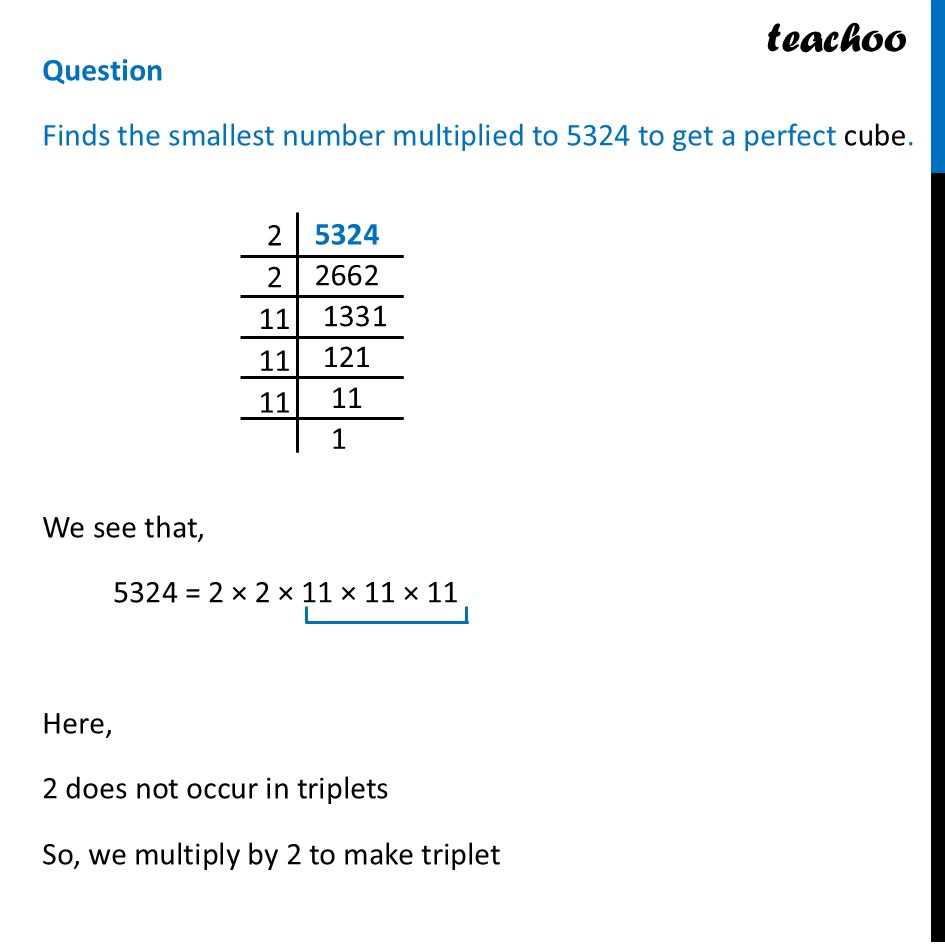
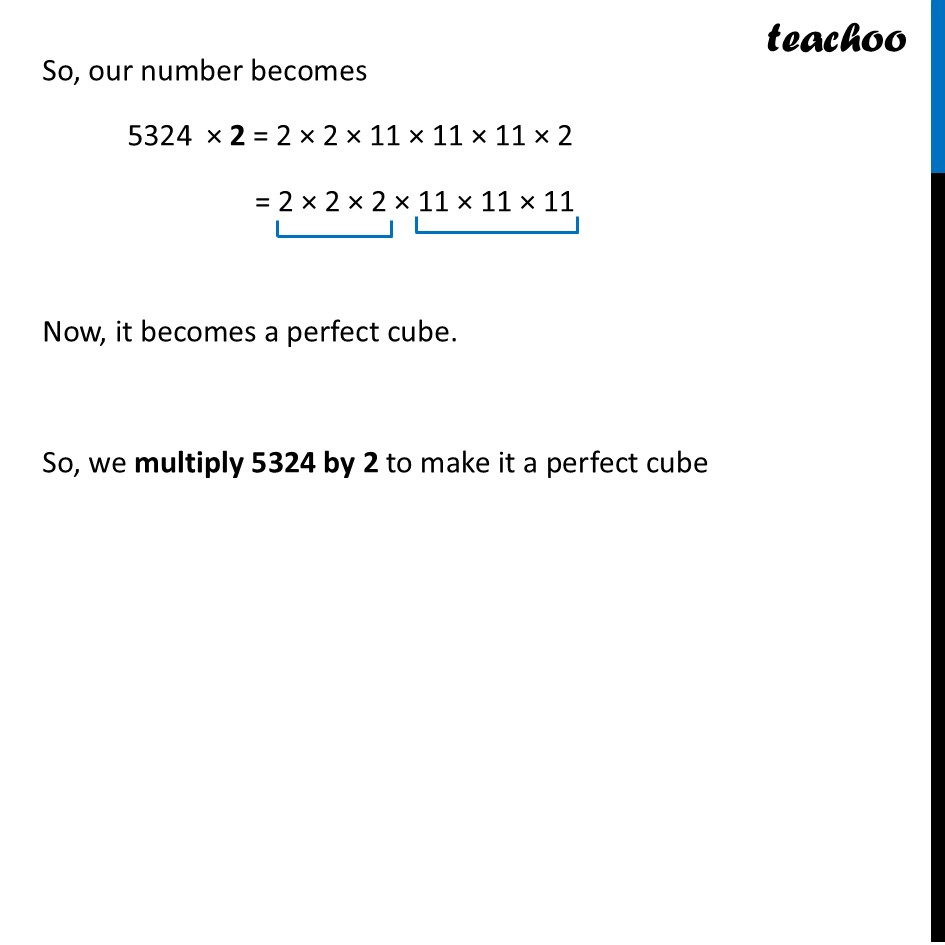

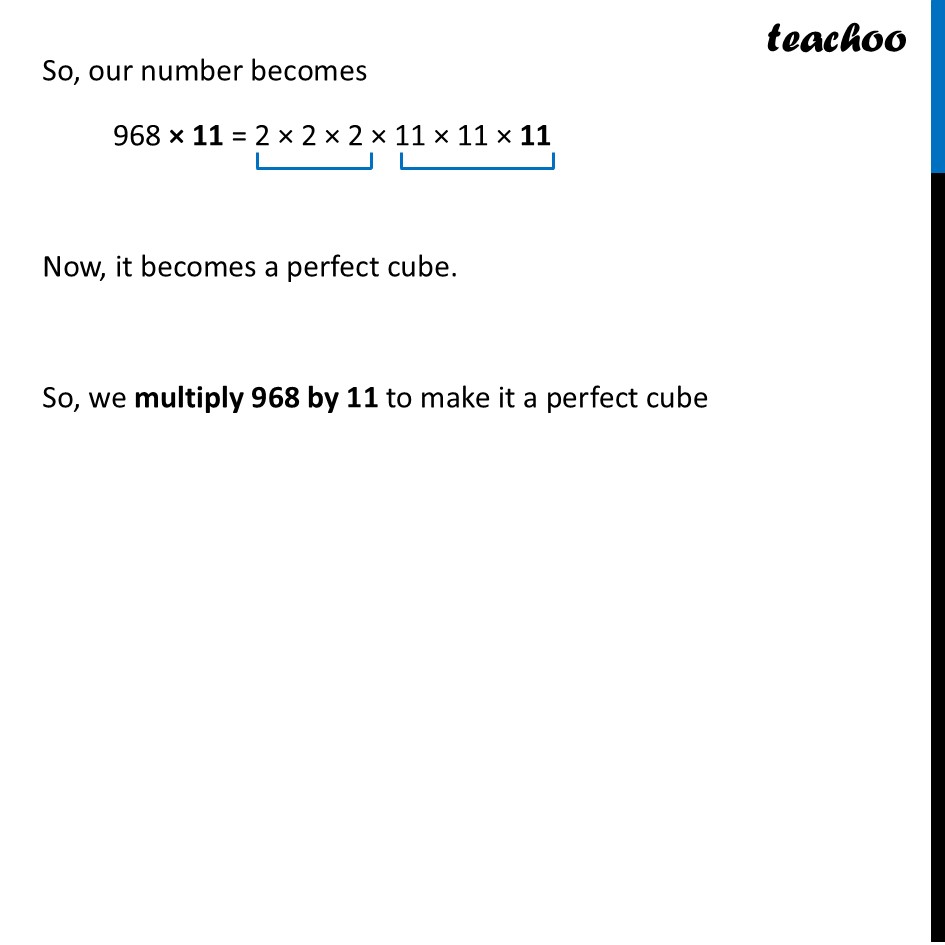
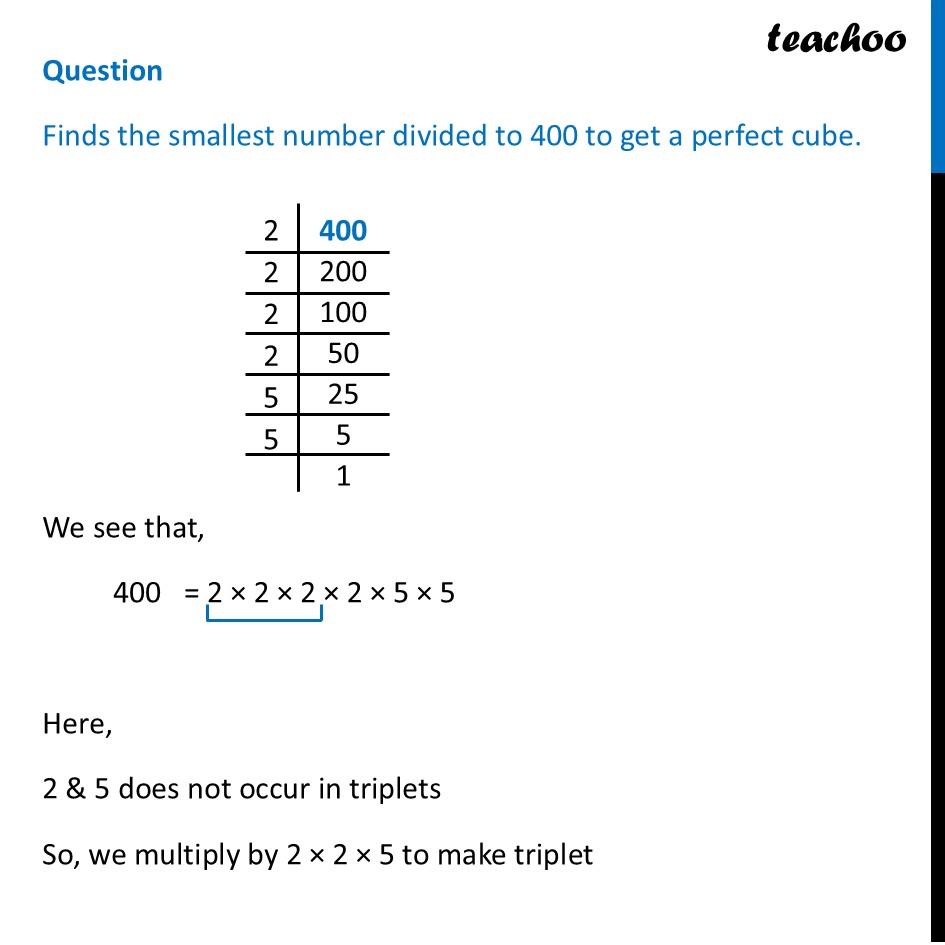
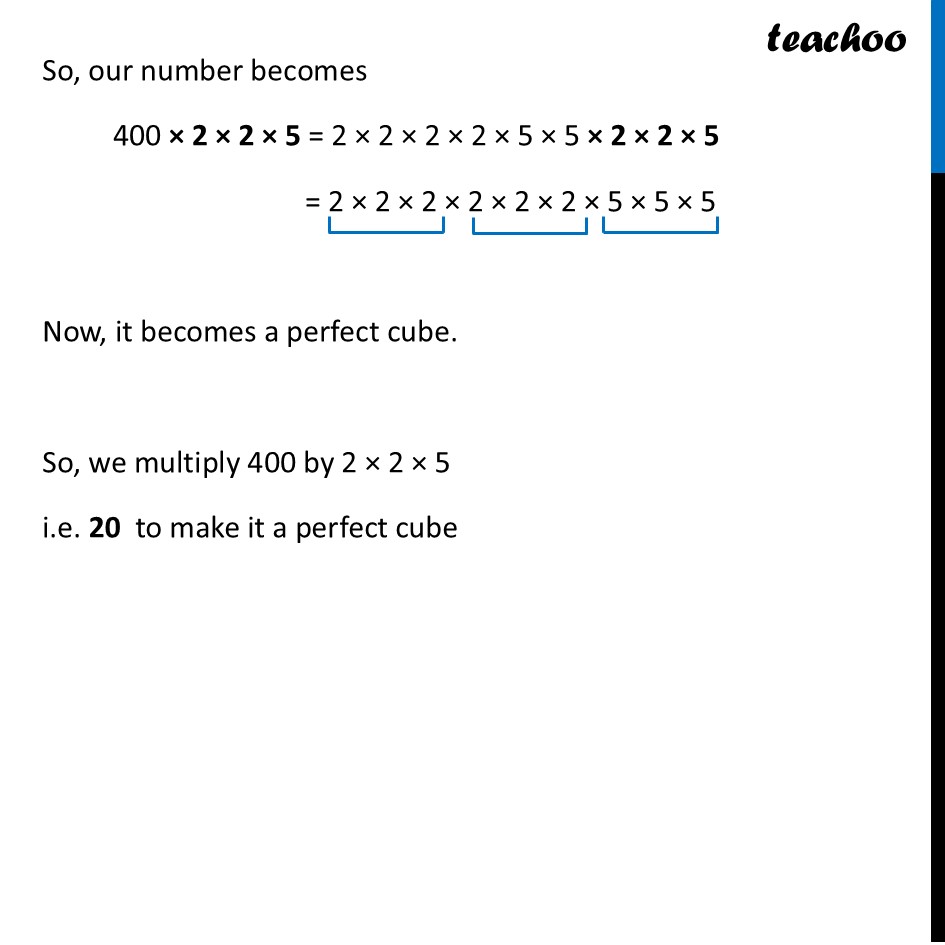
Smallest number multiply or divide to get perfect cube
Smallest number multiply or divide to get perfect cube
Last updated at July 30, 2025 by Teachoo








Transcript
Smallest number multiplied to form a Perfect Cube Let’s do this by examples Question Finds the smallest number multiplied to 1125 to get a perfect cube We see that, 1125 = 3 × 3 × 5 × 5 × 5 Since 3 does not occur triplets, we multiply by 3 to make a triplet So, our number becomes 1125 × 3 = 3 × 3 × 5 × 5 × 5 × 3 = 3 × 3 × 3 × 5 × 5 × 5 Now, it becomes a perfect cube. So, we multiply 1125 by 3 to make it a perfect cube Question Finds the smallest number multiplied to 5324 to get a perfect cube. We see that, 5324 = 2 × 2 × 11 × 11 × 11 Here, 2 does not occur in triplets So, we multiply by 2 to make triplet So, our number becomes 5324 × 2 = 2 × 2 × 11 × 11 × 11 × 2 = 2 × 2 × 2 × 11 × 11 × 11 Now, it becomes a perfect cube. So, we multiply 5324 by 2 to make it a perfect cube Question Finds the smallest number multiplied to 968 to get a perfect cube. We see that, 968 = 2 × 2 × 2 × 11 × 11 Here, 11 does not occur in triplets So, we multiply by 11 to make triplet So, our number becomes 968 × 11 = 2 × 2 × 2 × 11 × 11 × 11 Now, it becomes a perfect cube. So, we multiply 968 by 11 to make it a perfect cube Question Finds the smallest number divided to 400 to get a perfect cube. We see that, 400 = 2 × 2 × 2 × 2 × 5 × 5 Here, 2 & 5 does not occur in triplets So, we multiply by 2 × 2 × 5 to make triplet So, our number becomes 400 × 2 × 2 × 5 = 2 × 2 × 2 × 2 × 5 × 5 × 2 × 2 × 5 = 2 × 2 × 2 × 2 × 2 × 2 × 5 × 5 × 5 Now, it becomes a perfect cube. So, we multiply 400 by 2 × 2 × 5 i.e. 20 to make it a perfect cube